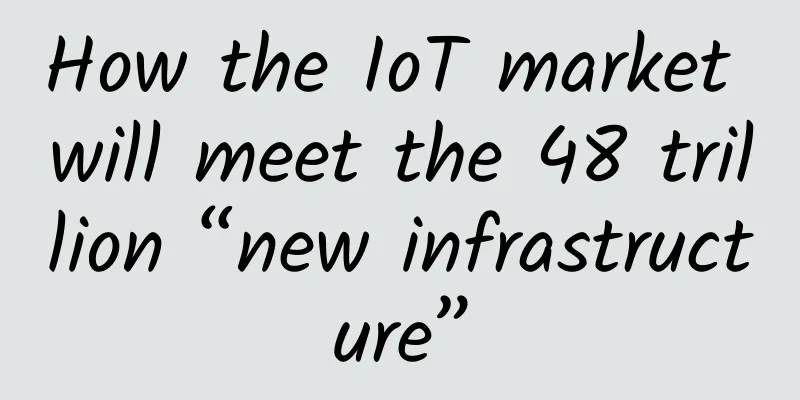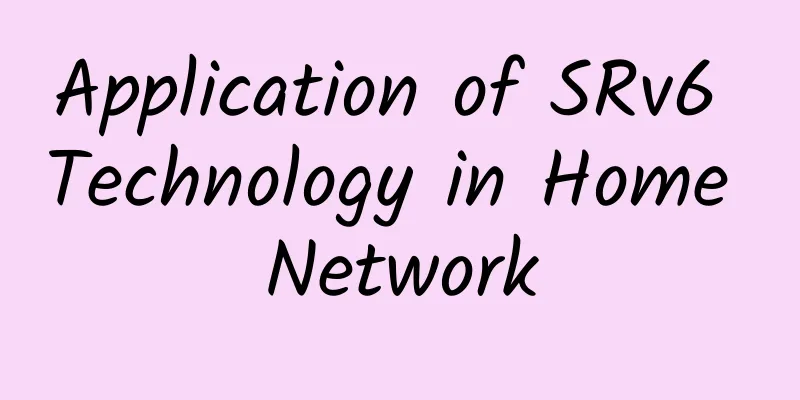How the IoT market will meet the 48 trillion “new infrastructure”

|
Recently, the central government has clearly instructed to speed up the construction of major projects and infrastructure that have been clearly defined in the national plan, including accelerating the construction of new infrastructure such as 5G networks and data centers. According to incomplete statistics, 24 provinces, cities and districts have announced future project investment plans - 22,000 projects with a total investment of 48.6 trillion yuan.
Compared with the traditional "railway, highway and basic infrastructure", the "new infrastructure" covers 5G base station construction, new energy vehicle charging piles, big data centers, artificial intelligence, industrial Internet, ultra-high voltage, intercity and urban rail transportation, involving seven major areas and related industrial chains. The accelerated launch of the "new infrastructure" will surely greatly stimulate China's economy, and emerging industries such as 5G, artificial intelligence, and the Internet of Things will also usher in major development opportunities. In terms of the Internet of Things, data collection and transmission of the "new infrastructure" are indispensable, so the use scenarios of the perception layer, transmission layer, platform layer, and application layer of the Internet of Things will be greatly increased in the process of "new infrastructure". Driven by 5G, the market for AIoT, industrial Internet equipment, and Internet of Things platforms that integrate artificial intelligence is expected to accelerate. The demand for IoT is growing explosively As various regions usher in a large-scale return to work, the prevention and control of the new coronavirus epidemic has entered a critical period. In order to win the "blocking war" against the epidemic, airports, railway stations, subway stations, large communities and other key areas have started temperature detection work, and strengthened the screening of people with abnormal body temperature and suspected patients - non-contact epidemic identification, the Internet of Things plays a big role. IoT companies have fully armed themselves with technology, unleashed technological energy to fight the epidemic, and launched a technological war against the epidemic. For example, China Telecom, which has 160 million cellular-connected IoT users, has applied IoT technology to contactless epidemic identification, location tracing, automatic collection and remote monitoring, and has been applied to epidemic investigation, monitoring, early warning, prevention and control, treatment, management and other links, promoting automated and intelligent "technical defense" to replace "human defense". At the same time, China Telecom has fully utilized the advantages of the integration of IoT, cloud and network, and launched smart community anti-epidemic products such as Tianyi loudspeakers, smart door magnets, mask monitoring, and body temperature monitoring. At present, Tianyi loudspeakers alone have covered thousands of towns and villages across the country, with a total of more than 500,000 broadcasts. "The Internet of Things business is not only the traditional low-data-rate large-connection business such as meter reading, but a broad Internet of Things business that includes all machine-to-machine communication scenarios. This epidemic will inevitably promote the broad Internet of Things business." SA senior analyst Yang Guang said that in the context of epidemic prevention, some jobs originally performed by humans will be replaced by machines; on the other hand, epidemic prevention work will also give birth to new application scenarios. For example, the development speed of remote consultation and telemedicine may be much faster than previously expected. It is not difficult to see from this epidemic that China's economic "smart" demand has shown explosive growth, and new business models such as smart logistics, smart retail, infrared temperature measurement, and smart medical care have emerged overnight, which also means a huge demand for "new infrastructure" such as 5G and the Internet of Things. And with the layout and construction of domestic "new infrastructure", typical applications of mobile Internet of Things such as mobile wearable devices, Internet of Vehicles, and drones have developed rapidly, and the corresponding consumer market has begun to take shape. From the perspective of the industrial chain, China has formed a relatively complete IoT industrial chain including chips, components, equipment, software, system integration, operation, and application services, and the development of each key link has also made significant progress. From the perspective of industrial scale, the national IoT has maintained a relatively high growth rate in recent years. The IoT is accelerating its integration with other ICT technologies as well as manufacturing, new energy, new materials and other technologies, and is rapidly penetrating in many fields, giving new connotations to concepts such as service and innovation. It can be said that the IoT has entered a new stage of cross-border integration, integrated innovation and large-scale development from concept hype, fragmented applications and closed-loop development. Promote the scale of IoT and eliminate application “islands” The report "Mobile Economy 2020" points out that global IoT revenue will more than triple in the next few years, from $343 billion in 2019 to $1.1 trillion in 2025. How to get a share of such a huge market and keep up with the accelerated pace of national economic structural transformation brought about by the "new infrastructure" will directly affect the future development of enterprises. In the opinion of industry experts, China's Internet of Things has already acquired a certain degree of international voice in basic theory, standard setting, and system architecture, but at the application level, Internet of Things companies still need to continuously innovate business operation models and mechanisms. At present, the Internet of Things has been applied in many fields such as industry, commerce, and consumption, and can even derive hundreds of application scenarios. However, in different scenarios, different industries, different fields, and different needs use different solutions, which leads to the rich and fragmented development of terminal devices. Fragmentation makes the application of the Internet of Things become information "islands", hindering the further scale development of the Internet of Things industry. "In terms of business models, we should see that the Internet of Things is a very long-tail market. To promote the full development of Internet of Things applications, it is necessary to mobilize the enthusiasm of Internet of Things users, especially corporate users. In this case, the industry still needs to provide corporate users with as many choices as possible, including technical standards, spectrum, service providers, etc." Yang Guang said, "The development of the Internet of Things abroad can provide a certain reference for the development of the Internet of Things in China. For example, in the European and American markets, in addition to the Internet of Things services based on cellular networks provided by telecom operators, corporate users can also use unlicensed spectrum, or even dedicated private spectrum, to deploy their own Internet of Things networks." So, how can the industrial chain promote the development and maturity of the Internet of Things industry? In Yang Guang's view, my country's market size plays a huge role in promoting the maturity of the Internet of Things industry chain. In order to achieve economies of scale, the industrial chain needs to classify and aggregate technical requirements from different application scenarios as much as possible, form cross-scenario standards, and increase the scale of the industry. The development of the Internet of Things as a national infrastructure strategy is of vital importance to my country, both now and in the future after the epidemic. The epidemic will eventually pass, and the development of the Internet of Things as infrastructure construction will play an important role in the next few decades. At the same time, the industry must also be aware that there are still some shortcomings in the development of the Internet of Things in my country, and it also faces many difficulties and challenges: high costs, immature technology, security issues, imperfect relevant laws and regulations, lack of business models and leading enterprises, etc. In the future, the industrial chain needs to take industry applications as the starting point, institutional mechanisms as the guarantee, infrastructure as the support, and security as the cornerstone, and work together with the global industry to build a good Internet of Things ecosystem. |
<<: Video websites in Europe reduce bitrates to ease the burden on broadband operators
>>: 5G plans of the three major operators in 2020
Recommend
CAICT's first batch of AIOps systems and tools evaluations, Borui Data was rated "comprehensive" for anomaly detection module
Recently, Swift-AI, the intelligent operation and...
Within 60 days, a computer room caught fire and the four major cloud giants went offline. How can operations and maintenance avoid downtime?
The day before yesterday morning, Tencent's c...
MQTT protocol, someone finally explained it clearly
[[409407]] This article is reprinted from the WeC...
Development Trend of International 5G Private Network Applications
As an important driving force for the digital tra...
my country's 5G construction and development have achieved remarkable results, and the 6G layout is about to start
At present, 5G, as a global emerging strategic in...
Jingwen Internet: Japan VPS free upgrade package, Japan server free upgrade 100M bandwidth, recharge 1000 and get 300 yuan
The last time I shared information about JWDNS wa...
Microsoft Build 2017: Officially released Visual Studio for Mac
On the evening of May 10th, Beijing time, Microso...
[11.11] BGP.TO Japan Softbank/Singapore CN2 server 35% off monthly payment starting from $81
BGP.TO announced a promotion during this year'...
How do operators grasp the pulse of the cloud computing market in the 5G era?
On June 6, 2019, the Ministry of Industry and Inf...
In 2025, the 5G core market size will reach US$9.497 billion
According to ResearchAndMarkets, the global 5G co...
Why is it necessary to change the RAN architecture?
First, we need to know why we need to evolve from...
[Black Friday] ExtraVM: 50% off VPS with 2GB or more memory, 1Gbps unlimited traffic, data centers in Los Angeles/Dallas/Netherlands
ExtraVM's 2023 Black Friday event is mainly f...
After 6G, will there be 7G and 8G?
But in any case, from 1G to 5G, it has developed ...
The Evolution of Hybrid Workplace Networking
The past few months have significantly changed th...
9 classic cases, online teaching how to troubleshoot network failures
Network failure is the most common and difficult ...







![[Black Friday] SoftShellWeb: $8.99/month-1GB/20GB/100GB@1Gbps/Taiwan VPS](/upload/images/67cabce4e3555.webp)

